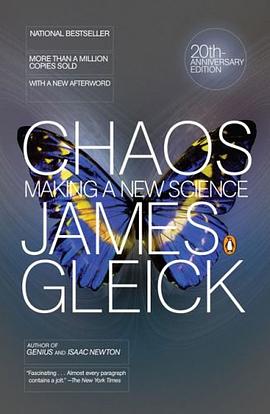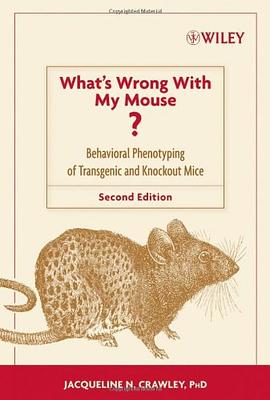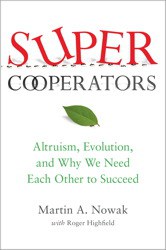

具体描述
Few writers distinguish themselves by their ability to write about complicated, even obscure topics clearly and engagingly. In Chaos, James Gleick, a former science writer for the New York Times, shows that he resides in this exclusive category. Here he takes on the job of depicting the first years of the study of chaos--the seemingly random patterns that characterise many natural phenomena.
This is not a purely technical book. Instead, it focuses as much on the scientists studying chaos as on the chaos itself. In the pages of Gleick's book, the reader meets dozens of extraordinary and eccentric people. For instance, Mitchell Feigenbaum, who constructed and regulated his life by a 26-hour clock and watched his waking hours come in and out of phase with those of his coworkers at Los Alamos National Laboratory.
As for chaos itself, Gleick does an outstanding job of explaining the thought processes and investigative techniques that researchers bring to bear on chaos problems. Rather than attempt to explain Julia sets, Lorenz attractors and the Mandelbrot Set with gigantically complicated equations, Chaos relies on sketches, photographs and Gleick's wonderful descriptive prose. --Christine Buttery
作者简介
James Gleick (born August 1, 1954) is an American author, journalist, and biographer, whose books explore the cultural ramifications of science and technology. Three of these books have been Pulitzer Prize and National Book Award finalists, and they have been translated into more than twenty languages.
Born in New York City, USA, Gleick attended Harvard College, graduating in 1976 with a degree in English and linguistics. Having worked for the Harvard Crimson and freelanced in Boston, he moved to Minneapolis, where he helped found a short-lived weekly newspaper, Metropolis. After its demise, he returned to New York and joined as staff of the New York Times, where he worked for ten years as an editor and reporter.
He was the McGraw Distinguished Lecturer at Princeton University in 1989-90. Gleick collaborated with the photographer Eliot Porter on Nature's Chaos and with developers at Autodesk on Chaos: The Software. In 1993, he founded The Pipeline, an early Internet service. Gleick is active on the boards of the Authors Guild and the Key West Literary Seminar.
His first book, Chaos: Making a New Science, an international best-seller, chronicled the development of chaos theory and made the Butterfly Effect a household phrase.
Among the scientists Gleick profiled were Mitchell Feigenbaum, Stephen Jay Gould, Douglas Hofstadter, Richard Feynman and Benoit Mandelbrot. His early reporting on Microsoft anticipated the antitrust investigations by the U. S. Department of Justice and the European Commission. Gleick's essays charting the growth of the Internet included the "Fast Forward" column on technology in the New York Times Magazine from 1995 to 1999 and formed the basis of his book What Just Happened. His work has also appeared in The New Yorker, the Atlantic, Slate, and the Washington Post.
Bibliography:
1987 Chaos: Making a New Science, Viking Penguin. (ISBN 0140092501)
1990 (with Eliot Porter) Nature's Chaos, Viking Penguin. (ISBN 0316609420)
1992 Genius: The Life and Science of Richard Feynman, Pantheon. (ISBN 0679747044)
1999 Faster: The Acceleration of Just About Everything, Pantheon. (ISBN 067977548X)
2000 (editor) The Best American Science Writing 2000, HarperCollins. (ISBN 0060957360)
2002 What Just Happened: A Chronicle from the Electronic Frontier, Pantheon. (ISBN 0375713913)
2003 Isaac Newton, Pantheon. (ISBN 1400032954)
2011 The Information: A History, a Theory, a Flood. New York: Pantheon Books. (ISBN 9780375423727 )
目录信息
读后感
这是一篇报告文学式的混沌学介绍,它给我们描述了混沌学的普适性,在数学、动力学、生物学、生理学、精神学、社会学、经济学、物理学、拓扑学、气象学、天文学、地理学等等领域,都惊人地发现了混沌。而分形、分枝、分维在我们的体内、血管中,心脏里,在每一片树叶、雪花、动...
评分《蝴蝶效应之谜:走近分形与混沌》http://book.douban.com/subject/24844888/ 有一首翻译的英文诗:“钉子缺,蹄铁卸;蹄铁卸,战马蹶;战马蹶,骑士绝;骑士绝,战事折;战事折,国家灭。” 苏轼诗:“斫得龙光竹两竿,持归岭北万人看。竹中一滴曹溪水,涨起西江十八滩。” ...
评分因为教Human Behavioral Biology的教授的一句,此书能让人达到内心的平静,今天我看完了,却发现并没有强烈的内心平静的感受,不就是将了混沌在各个领域的发展史么,难道白看了。 如果从大自然的的千变万化及非线性和混沌研究者所遇到的种种阻力着眼,不就是暗示了万事皆有可能...
评分记得早在高中的时候,电脑俱乐部的老师就给我们演示了Mandelbrot集的图形,神秘且美丽的分形艺术一下子就吸引了我,让我从此念念不忘。 后来,也看了一些有关混沌、分形、自相似之类的书籍,也照着其中介绍的公式写过一些程序生成过一些图形。但是也许是没有入门的缘故,我始...
评分《混沌》读书笔记 (一).分形 一.概念与性质 1.在不同的尺度上不规则的程度保持恒定;有规则的不规则性 2.在越来越小的尺度上重复结构 3.分形的意义是自相似。自相似是跨越不同尺度的对称性。 4..自相似性的威力要在更高层次的复杂性中才能显示出来。这是一个观察整体的问...
用户评价
"Order in chaos. It's science's oldest cliche."
评分这书读的我都要头秃 作者没有写秃吗(喂) 内容非常好玩了 回头写一套代码visualize一下w
评分好的书是展示了一个基本面,读者可以自由生发出不同的立体空间;好的朋友是理解并善于交换基本面的人(题外话)
评分这书读的我都要头秃 作者没有写秃吗(喂) 内容非常好玩了 回头写一套代码visualize一下w
评分genius is inspiring
相关图书
本站所有内容均为互联网搜索引擎提供的公开搜索信息,本站不存储任何数据与内容,任何内容与数据均与本站无关,如有需要请联系相关搜索引擎包括但不限于百度,google,bing,sogou 等
© 2025 book.quotespace.org All Rights Reserved. 小美书屋 版权所有




















